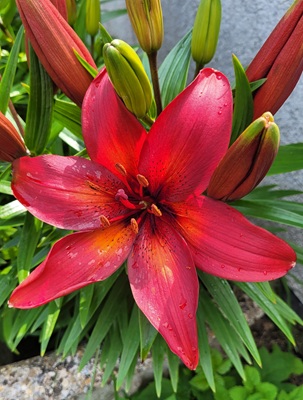Flower Properties
| Property | Value |
|---|---|
| English Name | Orange Lily |
| MainColor | Red |
| PlantType | |
| Growth Type | |
| Season | May |
| ImageUrl | Lilium-001 |
| Photographer | DP |
| Location | |
| Human Toxicity |
Flower Details
Description
The orange lily is a striking perennial with tall stems and vivid orange, upward-facing flowers. It’s among the oldest lilies cultivated in Europe, admired for its bold colour and dramatic presence in meadows and gardens.
Distribution
Native to central and southern Europe. It has been grown ornamentally in the UK for centuries and is occasionally naturalised in the wild.
Medicinal/Other Uses

In traditional medicine, lily bulbs were sometimes applied as poultices for skin conditions or inflammation.
Edibility
Bulbs of some lilies are eaten in parts of Asia, but this species is not generally considered edible in the UK.
Human Toxicity

Highly toxic to cats (even pollen can cause kidney failure). In humans, ingestion of bulbs, leaves, or flowers can cause nausea, vomiting, and abdominal upset.
Pet Toxicity

Extremely toxic to cats (kidney failure, can be fatal); also unsafe for dogs
Active Compounds
Contains steroidal saponins and alkaloids, contributing to its toxicity.
